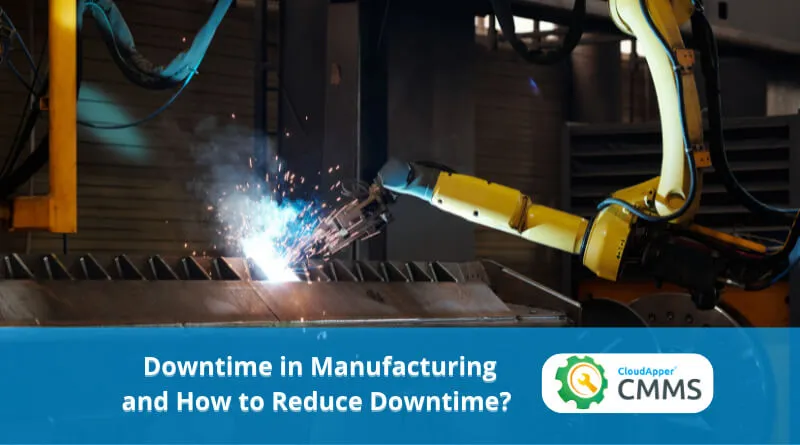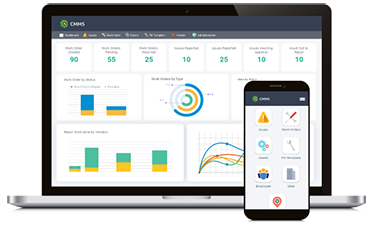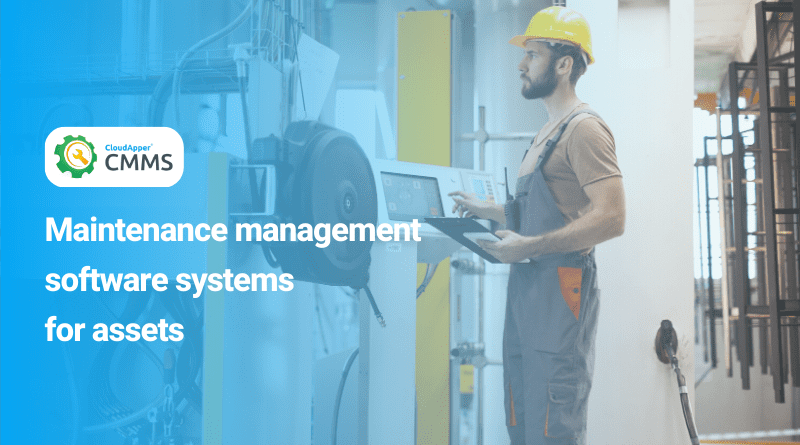Downtime in manufacturing is one of the biggest challenges a facility faces today. Reducing downtime is a major concern of facility managers. Downtime may occur for various reasons, and, to some extent, it is impossible to avoid. But through careful planning with the help of CMMS software, we can control downtime.
What is Downtime in Manufacturing?
Process or equipment problems account for the vast majority of manufacturing downtime. Unplanned downtime caused by unforeseen reasons accounts for 80% of industrial downtime. Manufacturing downtime refers to any length of time when facilities output is paused, including both scheduled asset maintenance downtime and unscheduled downtime caused by equipment failure and other incidents.
Manufacturing downtime results in a drop in earnings. In the short term, halted manufacturing means no money generation. Furthermore, when the flow of input and output is disturbed during industrial downtime, relationships and contracts with other organizations might become strained.
According to studies, workplace accidents rise twelvefold during production startup and shutdowns, emphasizing the need to avoid industrial downtime.
The average plant loses 5% to 20% of its productivity every year due to industrial downtime. During downtime, workers may also be exposed to new operating situations, dramatically raising safety issues.
Reasons for Downtime in Manufacturing
Some sources of downtime are known and therefore avoidable, whilst others appear seemingly out of nowhere. In this section, we examine the reasons for downtime in manufacturing.
- Asset
A breakdown, malfunction, or outright failure of an asset, whether in hardware or software, is the most prevalent source of unexpected downtime. According to a report on downtime, asset failure accounts for 50% of manufacturing downtime.
- Supply
Maintenance downtime is frequently discussed in terms of asset breakdown. However, downtime can also be caused by inadequate materials. The following are some of the most common causes of raw material shortages and stockouts:
- Unanticipated shifts in client demand
- Issues upstream in the supply chain
- Unachievable client promises
- Poor transparency and control over delivery dates
- Inadequate safety stock levels
- Inventory errors
- Inventory expiration
- Unexpected Occurrences
Natural disasters such as floods, fires, earthquakes, and power failures can all cause downtime, but that doesn’t mean manufacturers can’t safeguard their businesses from these issues.
How to Reduce Downtime
Using CMMS software to track your machines is the first step toward reducing downtime. You can also motivate your employees and make sure the machines are always in perfect condition. Here are the top five ways to minimize downtime in manufacturing:
- Regular Maintenance:
Car owners are well aware of the need to replace the oil and conduct routine maintenance. Do the same with your production plant. Like your motorcycle or automobile, regular maintenance reduces downtime and the likelihood of failure and increases safety and productivity. By using CMMS software, you can schedule maintenance with a button click.
- Regular Audits:
It’s not a pleasant task, but it must be performed. Risk auditing is the quickest and most effective technique to reduce potential downtime losses in the future.
Identifying outdated equipment is an example of a risk audit. Even in the most advanced enterprises, the average age of equipment may be around 10-20 years old. Moreover, spare parts can be tricky to get for older pieces of equipment, as they may no longer be manufactured by the company you purchased them from.
- Manufacturing Goals:
Establishing daily and quarterly incentive targets to decrease mistakes and improve productivity may significantly reduce downtime in manufacturing. Downtime is reduced when employees are engaged and inspired. Employees who understand their position in the production process offer more meaningful input and operate at a higher level of efficiency.
It is also critical to use employee recommendations on ways to reduce downtime, boost morale, and create more items. Listen to your production line employees because they are hands-on with manufacturing; they may provide solid recommendations on reducing downtime.
- Upgrade Equipment:
Replacing old machinery to boost performance is critical in lowering production downtime. Outdated machinery stifles the production process. Installing new equipment should keep your factory floor up to speed on the latest technology, allowing managers to recommend improvements to boost production.
- Data and Reporting Systems:
Many industrial organizations continue to prepare reports and gather data manually. Making reports and collecting information manually can prolong downtime and require a significant amount of revenue. What you really need is automated report production and data collecting. This automation is only possible with CMMS software. This program will provide you with real-time data access.
Let’s be frank, no matter how much you try, you can never fully eliminate downtime. But by using CMMS software, you can limit downtime to a bare minimum. CloudApper CMMS is a super easy tool to use and will help you reduce downtime.
What is CloudApper AI Platform?
CloudApper AI is an advanced platform that enables organizations to integrate AI into their existing enterprise systems effortlessly, without the need for technical expertise, costly development, or upgrading the underlying infrastructure. By transforming legacy systems into AI-capable solutions, CloudApper allows companies to harness the power of Generative AI quickly and efficiently. This approach has been successfully implemented with leading systems like UKG, Workday, Oracle, Paradox, Amazon AWS Bedrock and can be applied across various industries, helping businesses enhance productivity, automate processes, and gain deeper insights without the usual complexities. With CloudApper AI, you can start experiencing the transformative benefits of AI today. Learn More


























